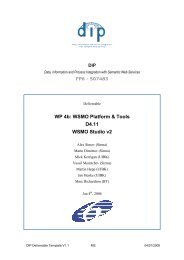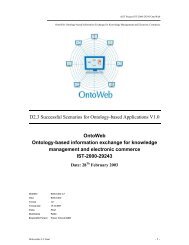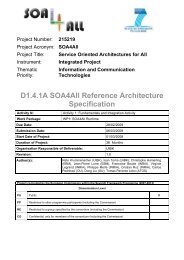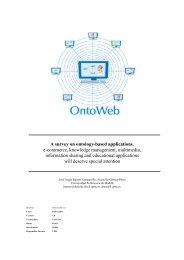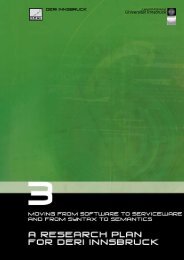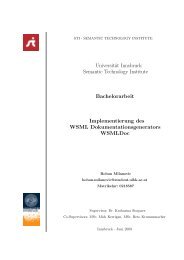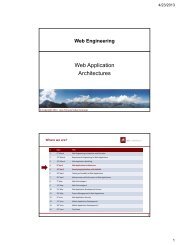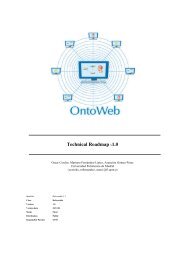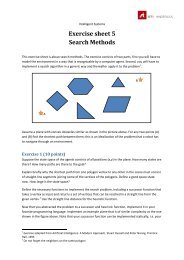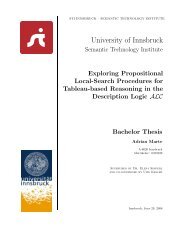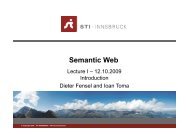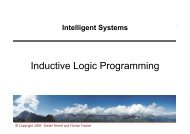D7 â Dynamic Ontology Management System (Design) - STI Innsbruck
D7 â Dynamic Ontology Management System (Design) - STI Innsbruck
D7 â Dynamic Ontology Management System (Design) - STI Innsbruck
Create successful ePaper yourself
Turn your PDF publications into a flip-book with our unique Google optimized e-Paper software.
D07_01_DOMS_F01<br />
2.2 ARCHITECTURE OF THE DYNAMIC ONTOLOGY MANAGEMENT SYSTEM<br />
The design of the proposed system is depicted in Figure 1. The system consists of two differentiated<br />
but collaborative parts:<br />
• The intelligent search engine (shaded top block) and<br />
• The knowledge repository and ontology personalisation interface (shaded bottom right block).<br />
Figure 1: <strong>Dynamic</strong> <strong>Ontology</strong> <strong>Management</strong> <strong>System</strong><br />
The expert communicates with the proposed system by generating a domain ontology or by asking the<br />
personalisation interface system to provide him/her with an ontology customised to his/her own<br />
requirements. Once a domain ontology is created, the user agent (A user ) requires information related to<br />
this ontology to the knowledge repository or to the search engine. The agent decides whether the<br />
information stored in the repository is good enough for the user expectations or the search engine is<br />
required to update this information with new knowledge extracted from the web.<br />
These two main subsystems are described in more detail in the following sections of this document,<br />
but we want to first show the exchange of information between them with an example. Let's assume<br />
that a user who is not an expert requires information about cells applied in biosensors. The user could<br />
import an already built biotechnology domain ontology (domain ontologies are stored in the RDFs<br />
database, repository, and are supported by SESAME). After importing a domain ontology, the user<br />
could perform two actions: he/she can consult the information stored in the repository (the repository<br />
stores information which was previously discovered from the web or manually introduced);<br />
alternatively, the user can invoke the intelligent search engine and obtain new data from the web. The<br />
first option is the simplest and it only requires one select operation from the database. The second<br />
option requires the use of search agents that seeks information about cells applied in biosensors. The<br />
agents return a sorted collection of links which will be analysed by GINY [Riaño and Gramajo, 1998]<br />
in order to compose the instances of the domain ontology. Following the example, let's suppose that<br />
the http://www.fst.rdg.ac.uk/courses/fs560/topic3/topic3.htm link was found by a search agent, GINY<br />
IST-2001-33174 © h-TechSight Consortium October 2002 Page 8 of 27



